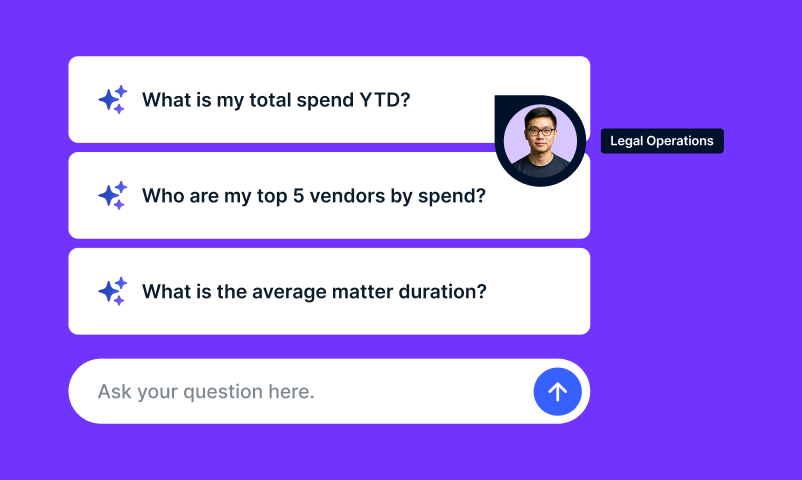So, you have carefully assessed your legal team’s challenges, mapped detailed requirements, completed a thorough assessment process, and selected your preferred matter management platform – now what next? Unfortunately, many legal teams stop here without properly thinking about how they will make the deployment and adoption of the new system a success. Bringing in a new matter management system takes time, money, and effort. Therefore, plans must be made to ensure that the new tool delivers the anticipated value and outcomes for your legal department and the broader organization.
In the fourth and final part of our matter management blog series (read the first installments here: Part I, Part II, Part III), we explore five ways to ensure that your matter management implementation is a great success.
1. Start Small, but Aim Big
This is less of a tangible step and more of a mindset. Many legal teams (energized by the selection process) get excited by the potential impact of a new legal matter management tool and want to roll it out as quickly and widely as possible. Other teams are immediately under pressure to prove their value to the organization – even if they are more cautious about the rollout. This leads to overambitious implementations that are almost doomed to failure before they begin. It’s great to have grand plans, but to succeed, it’s essential to build toward that success incrementally. For example, identify a small sub-team for the initial rollout or choose a larger group, limiting the initial deployed functionality. This allows you to put the necessary support in place, take feedback, measure impact, and learn valuable lessons before a broader rollout.
2. Bring Users on a Journey With You and Implement a Solid Training Program
While some users of a new matter management system may have been involved in the procurement process, many will not have been. You should not assume those users will understand the rationale for bringing in the new tool or be as enthused as the project team. One of the main reasons that new software implementations fail is down to end-user resistance or low adoption. Some put this down to people being stuck in their ways or technophobic, but often it is down to a lack of understanding and ‘buy-in’ on the part of the users. Therefore, make sure you explain to users why the new matter management system is being implemented, link it to their daily challenges, and showcase how it will benefit them personally. Users soon get on board when they realize a new tech tool will make their working life easier! Find more insights on how to secure legal technology adoption in this blog.
Another reason why user adoption of a new matter management system is often low has nothing to do with possible skepticism and resistance on – the part of users – it’s simply because users were not instructed on how to use the software. While many newer software platforms are built with an exceptional user experience and are intuitive, there is still a steep learning curve for any new software platform. It’s a simple fix! When looking for a new matter management system, ensure there is good user guidance and support built into the system, ensure you have coordinated thorough training for users, and build an associated knowledge base to deliver learning resources, keep users informed, and support new joiners. Ask your vendor to help support your training program, as any Customer-Success driven vendor will have pre-prepared materials and extensive experience onboarding other clients’ users. Also, consider seeking internal volunteers willing to champion the new system and provide support and training to new users.
3. Measure, Measure, Measure
Doubtless, part of the business plan when requesting a budget for a new matter management system included details about the value such a tool would bring to your team and organization. That value could have been in the shape of lower costs, increased revenues, reduced risk, etc. But once you implement a new system, how do you know if it delivers the desired impact? The answer is that you measure it. To measure the impact, you must see the status quo before implementing the tool. Therefore, make sure you have identified your baseline metrics before implementation. You might also consider them as your Key Performance Indicators (KPIs). For example, if you’re interested in measuring how a matter management system reduces average matter cycle times, then make sure you know what average cycle times were before implementing the tool. After this, you need to track the metric to monitor impact and trends over time. Read more about typical KPIs in legal departments in this article. These steps will help you avoid the ‘implement and hope’ trap many teams fall into.
You also want to make sure you have a functioning feedback loop. No technology implementation is perfect the first time. It’s a very rare thing indeed for software to be deployed seamlessly without any issues or subsequent enhancement requests. To see the full value of a new matter management system, listening to your users and adapting accordingly is critical. Therefore, when implementing a new system, ensure you have created a user feedback mechanism and communicated this accordingly. Seek as much feedback as possible, monitor trends, and share the results amongst leadership and your users. Transparency is key! Treat implementation as the first step in the journey of your new tool – seek to learn and aim for continuous improvement. As a legal operations software provider, we’ve observed this many times; you may find new value from the tool and out-delivering on your forecasted ROI.
4. Create New Roles to Help Drive Success
Legal technology has evolved considerably over the last decade. Read more on the evolution of matter management here. Legal departments are looking beyond the traditional document and contract management tools and are now embracing solutions to support intelligent workflows, contract analysis, document assembly, decision automation, etc. Many new-generation tools are highly configurable and can be crafted to solve challenges or optimize certain processes. This requires people with both the legal and technical knowledge to “engineer” these solutions.
Furthermore, as legal department tech stacks grow, there is a requirement to manage the different solutions, maintain relationships with vendors, look for synergies, engage with central IT departments and ensure the legal team is supported and enabled from a technology perspective. Therefore, when thinking about implementing a new matter management system, why not consider bringing in additional roles, such as legal engineers and legal technology managers, to ensure its success? Don’t think that only lawyers can pick this up – legal technology is now a vocation in its own right! Many legal teams, therefore, increasingly bring experts from alternative professional backgrounds to the table. Use this opportunity to make your legal team even more agile and diverse.
5. Support Your New Users
Upfront training for a new matter management system isn’t enough on its own – it is also critical to make ongoing support available to users so that any technical or usability issues can be addressed quickly to reduce friction. The minute a user runs into friction, they will likely switch off the new system. This friction may be caused by not understanding certain functionality, performance issues, or even bugs in the system. Whatever causes the friction, systems and processes should be in place for a user to report their issue and obtain help and guidance. It’s critical to agree from the outset who within your organization will support your new matter management system. The best practice is not to assume it will be IT – as they only have limited resources and adding a new tool to their list may not be easy. Therefore, ensure you discuss support adequately before implementing a new system and agree on responsibility and internal SLAs, e.g., what issues are supported, by whom, and when support is provided. Then make sure your users know what support is available and how they reach it. Many sophisticated vendors also offer a support area within their application. This can anticipate many issues from the outset and avoid frustration and a high workload for your internal colleagues. Ask about this when selecting a vendor. Also, consider monitoring support data to help identify common issues – this can help improve training and support processes.
Let’s Summarize…
Implementing a new legal matter management system takes work. It takes careful planning and involves putting in place processes and support to ensure everyone is enabled to see the total value of the new tool and ensure that value is continually delivered throughout the lifecycle of the matter management platform. Starting with these five key tips will undoubtedly help keep you focused during your matter management implementation journey.
This is the final entry in a four-part series. Read the prior installments here:
Part I: The Definition of a Legal Matter and its Management,
Part II: 7 Key Components of a Full-Suite Matter Management System,
Part III: 7 Aspects In-House Teams Should Consider When Choosing a Matter Management Vendor






